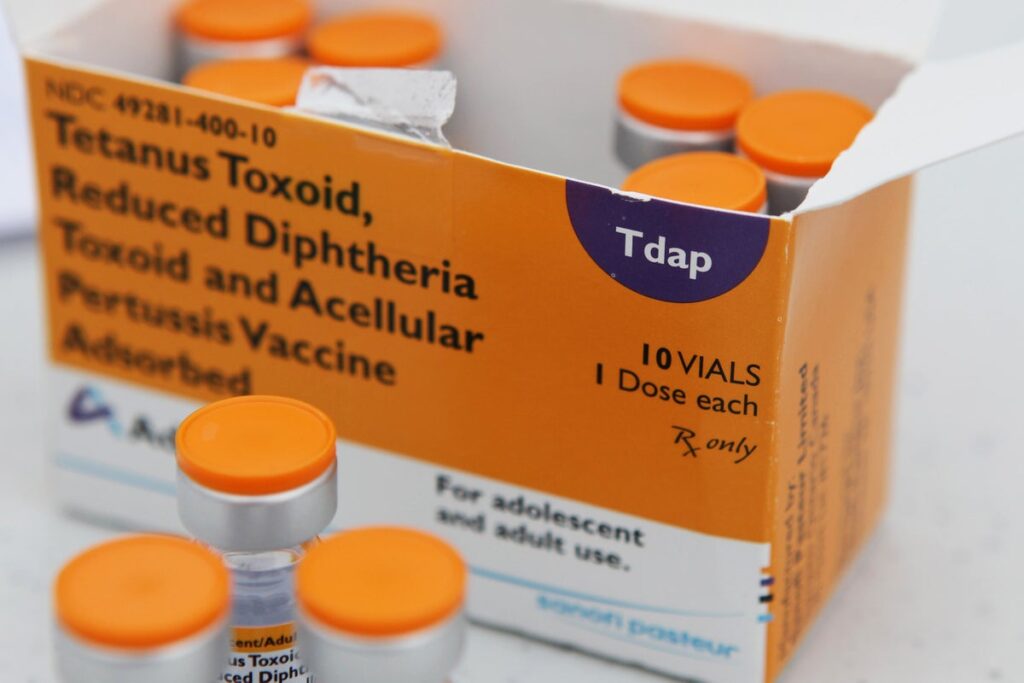October 17, 2025
2 min read
Why Aluminum in Vaccines Is Safe—And Often Essential
The FDA wants to reevaluate the use of aluminum adjuvants despite a long record of safe use in vaccines
Justin Sullivan/Getty Images
President Donald Trump said the aluminum in many vaccines is harmful during a wide-ranging press conference last month. The Food and Drug Administration is now examining the safety of the metal in vaccines in order to determine whether to remove it. But health experts say that the claims have no scientific basis and that taking such a step would endanger the country’s public health.
Vaccines containing aluminum “are incredibly safe,” says Peter Jay Hotez, dean of the National School of Tropical Medicine at Baylor College of Medicine, who has played a key role in developing vaccines for neglected populations. A wealth of aluminum-containing vaccines are on the market, including those for HPV, hepatitis and pneumococcal disease, as well as the combined Tdap and polio vaccines. Halting their production to make formulas without aluminum “would have a devastating effect,” Hotez says, because the development of new formulas would likely stop the production of current vaccines.
Scientists began using aluminum salts in vaccines almost a century ago as adjuvants, ingredients that are used to help produce a stronger or more effective immune response. They activate parts of the immune system that boost the production of antibodies and T cells against specific invading substances. “Without the adjuvant, you don’t get enough of the immune response, and the vaccine won’t work,” Hotez says of certain vaccines. “It’s absolutely essential.”
On supporting science journalism
If you’re enjoying this article, consider supporting our award-winning journalism by subscribing. By purchasing a subscription you are helping to ensure the future of impactful stories about the discoveries and ideas shaping our world today.
Using adjuvants such as aluminum also help make vaccines more efficient by lowering the amount of material needed to produce an immune response, reducing the number of booster shots needed and improving the body’s immune memory of a pathogen. Vaccine makers thoroughly test adjuvants during vaccine development, and the FDA and Centers for Disease Control and Prevention continuously monitor them after approval to ensure safety.
Vaccines contain tiny amounts of aluminum that are comparable to what infants ingest through breast milk or formula. During the first six months of life, babies receive about four milligrams of aluminum from vaccines, 10 milligrams from breast milk or 40 milligrams from regular formula. Babies who are fed with soy-based formula ingest almost 120 milligrams during the same period, according to the Children’s Hospital of Philadelphia.
U.S. Health Secretary Robert F. Kennedy, Jr., has a long history of claiming—without solid evidence—that vaccines, including those containing aluminum, cause autism in children. In August he called for the retraction of a paper that showed no link between aluminum in vaccines and chronic diseases in children.
The American Academy of Pediatrics (AAP) has emphasized that aluminum in vaccines strengthens the immune response and does not cause autism or other serious health problems. According to the AAP, decades of scientific research refute any causal connection between vaccine ingredients and autism spectrum disorder.
The government’s intention to remove aluminum from vaccines is not even feasible, Hotez says. Pharmaceutical companies developing vaccines would have to pay for new formulas, something that is very unlikely to happen, he says. And even if they did, “it would take a decade to reformulate the vaccines with new adjuvants and do all the testing that’s needed,” Hotez says.
It’s Time to Stand Up for Science
If you enjoyed this article, I’d like to ask for your support. Scientific American has served as an advocate for science and industry for 180 years, and right now may be the most critical moment in that two-century history.
I’ve been a Scientific American subscriber since I was 12 years old, and it helped shape the way I look at the world. SciAm always educates and delights me, and inspires a sense of awe for our vast, beautiful universe. I hope it does that for you, too.
If you subscribe to Scientific American, you help ensure that our coverage is centered on meaningful research and discovery; that we have the resources to report on the decisions that threaten labs across the U.S.; and that we support both budding and working scientists at a time when the value of science itself too often goes unrecognized.
In return, you get essential news, captivating podcasts, brilliant infographics, can’t-miss newsletters, must-watch videos, challenging games, and the science world’s best writing and reporting. You can even gift someone a subscription.
There has never been a more important time for us to stand up and show why science matters. I hope you’ll support us in that mission.

